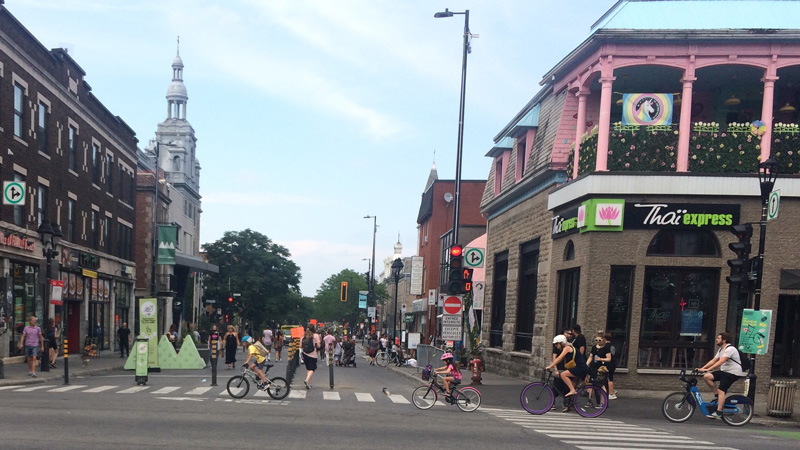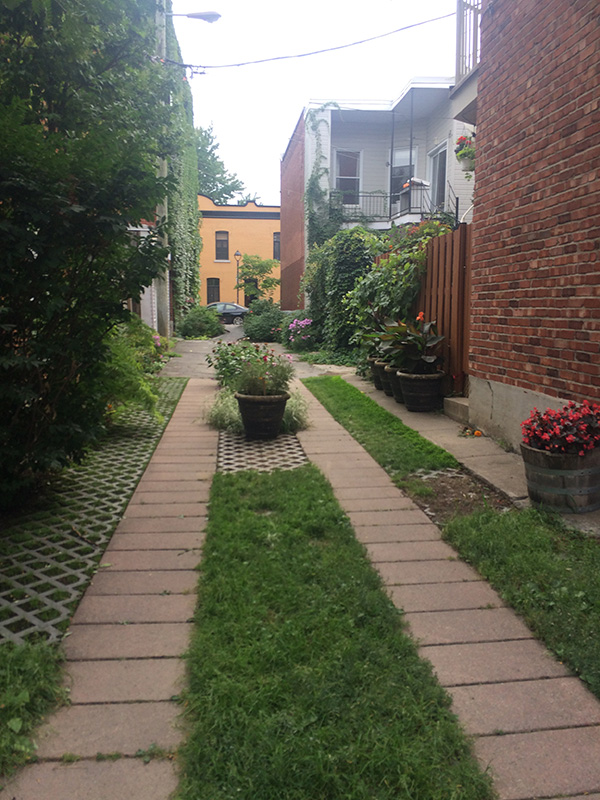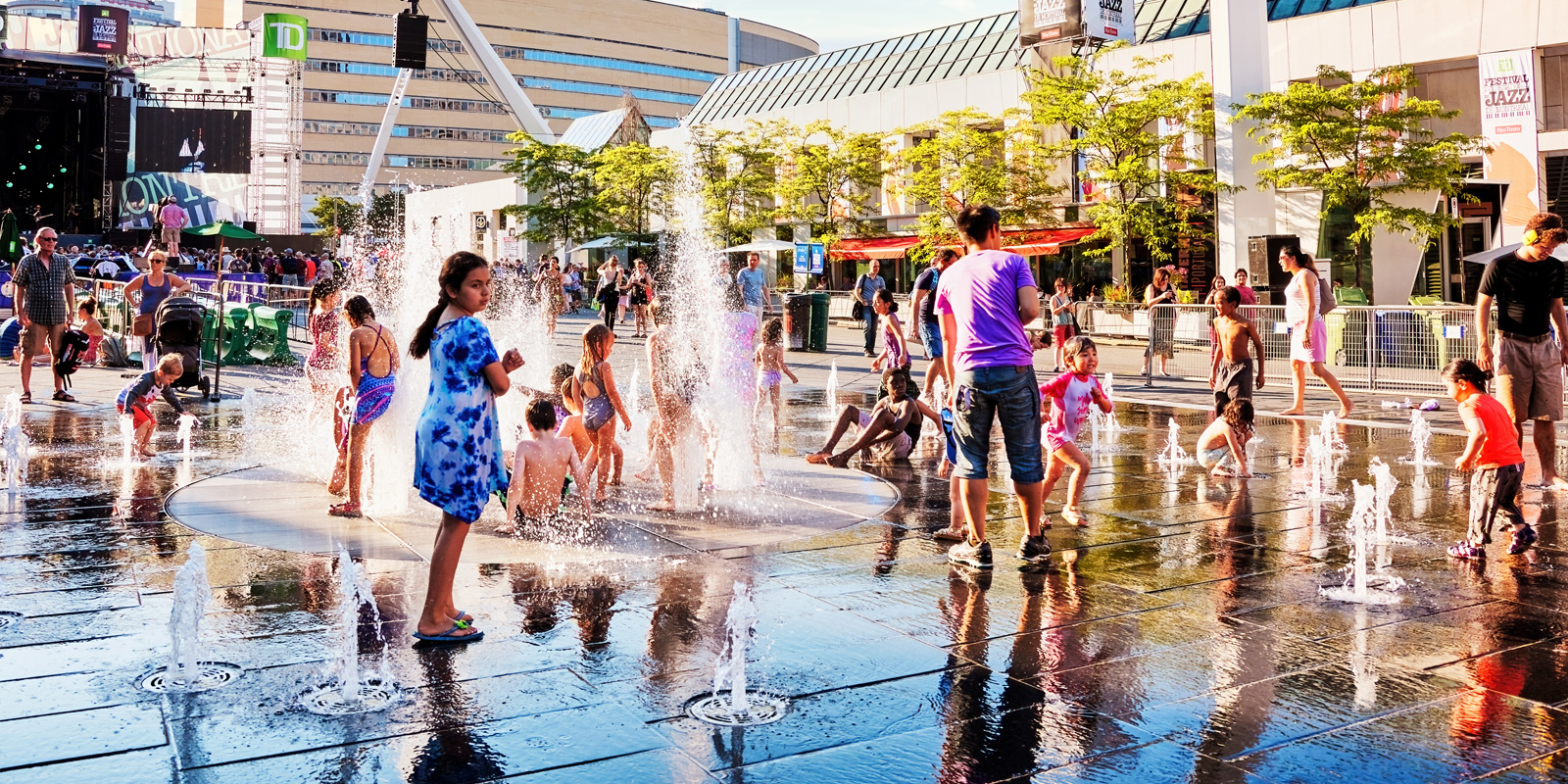Every city-dweller has lived or witnessed some version of it: the mom on a bus struggling to fold a stroller while clutching a tiny hand; the family of four squeezed into a one-bedroom apartment; the babysitter banging on the perennially locked park bathroom.
Cities are where over half of the world’s children live. But urban environments can feel built to deter kids and caretaking. That spurs families to bail on cities – – contributing to climate change through increased dependence on driving and inefficient housing. Kid-hostile urban design also takes its toll on the many families who live in cities.
Although studies on how neighborhood design impacts child development are scarce, research has established clear links between stress and the developing brain. Ask any caretaker and they’ll tell you—the size of their home, the transportation they can and can’t safely access, the safety of their streets, and how easy it is to use parks, child care and other amenities, can have a significant, ongoing impact on the strain experienced by parents and, by extension, their kids.
These elements make up what urban planners refer to as a neighborhood’s “built environment.” The built environment can support children and parenting, or be just another obstacle to overcome. Either sets the tone for how kids and caretakers experience a city, says Christine Serdjenian Yearwood, founder and CEO of the family transportation advocacy group UP-STAND. It can influence whether, say, a pregnant person gets offered a seat on a crowded subway or if that baby bump is viewed as a lifestyle choice, no more deserving of accommodation than a bag of golf clubs.

So what does a city that values kids and caretakers look like? Planners knowledgeable in child-friendly design say that walkable neighborhoods with a mix of commercial space and diverse housing lead to “positive social encounters and a strong sense of community” that help families thrive. Parks and other green space is also key, the Australian planning consultant Kristin Agnello explains in her book, Child in the City: Planning Cities for Children and Their Families.
Montreal makes for an inspiring example in North America. Teeming with green space and pedestrian-friendly neighborhoods, it’s also a city where considering family needs feels baked into urban planning.
Family-friendliness “is a policy that Montreal has adopted,” explains Faiz Abhuani, director of Brique par Brique, an affordable housing initiative in Montreal. “In some boroughs, this is their guiding principle. It’s like a religion.”
Paid Parental Leave and Universal Child Care
As part of the French-speaking province of Quebec, Montreal families benefit from Quebec’s renowned paid parental leave and universal child care programs – – two initiatives that in part sprang from efforts to promote the French language’s endurance in the province by strengthening families. This attitude towards children as an investment to be nurtured permeates everything from the government’s having footed the bill for IVF procedures, to identifying companies with family-friendly work environments, to a pandemic pilot project prioritizing parents for the vaccine. It’s an attitude that also informs ongoing adjustments to the city’s housing policies, transportation system and green space.
Housing to Fit Families
According to Canadian urbanist Brent Toderian, a key reason many young families flee cities is housing. Families need bigger homes, Toderian explained to Vox. But because real estate developers maximize profits by building smaller units, without regulation of new development, housing designed for couples and single people dominates a city’s landscape. This is true for affordable and subsidized housing as well, with one analysis finding that in New York City, the affordable three-bedroom apartment is nearing extinction.
Known for its cheap rent, Montreal now has several neighborhoods barreling toward unaffordability, and the city has long suffered a shortage of family-oriented housing stock. As a corrective, the city recently passed a bylaw requiring major housing developments to set aside a percentage of units for affordable and subsidized housing as well as family housing, defined as three bedrooms or bigger.
Abhuani of Brique par Brique has concerns that the bylaw ties new housing to gentrification, and that real estate developers with no commitment to the community will be the gatekeepers for homes. But he and other advocates generally agree it demonstrates an important willingness to center families’ needs in planning.
Stroller-Friendly Public Transportation
Walking and using public transportation isn’t just good for the environment; it’s good for the family budget and health. In Child In the City, architect Nidhi Gulati makes a persuasive case for taking public transportation being good for children’s cognitive development as well, by providing brain-boosting interactions with the built environment.

But public transportation is designed with the single commuter in mind. One report found that women using public transportation with children in Los Angeles incur “higher travel costs, elevated stress, and faced greater safety risks on transit than men.” Yearwood of UP-STAND says it’s no wonder “there’s this huge population of people that just opt out of public transportation because it’s not built with them.”
Welcoming a new child is when some families purchase vehicles for the first time, or trade in cars for gas-guzzling SUVs. Others stop venturing out with children. “We hear all the time that once people have young children they just don’t leave the area. And it most certainly has an impact on their mental health and isolation,” says Yearwood.
A leader in the global movement to make cities more bike- and pedestrian-friendly, Montreal’s public transportation is free for children under 11. The city’s public buses are low to the ground, making for easy stroller- and small-child-boarding, and there’s a space up front with folding seats marked for both wheelchairs and strollers.
Its metro system has clear signage identifying strollers and pregnant passengers as a priority group for seating, and the entire system is undergoing a massive effort to become more accessible. Improvements, which include more elevators and clear barriers separating train tracks and platforms, will be a boon for small kids and their caretakers.
Montreal also boasts an impressive biking infrastructure that parents feel safe enough to use with kids. At the YMCA camp my kids attended this summer in a bustling neighborhood, children as young as 6 or 7 biked alongside parents for transportation.
Green Space to Grow On

Also significant: camp counselors and kids made use of not one, but four nearby parks. Research shows this kind of easy access to green space offers city dwellers a host of benefits: from mitigating the effects of extreme heat, to promoting well-being, to providing an arena where young children play while building gross- and fine-motor skills.
The greenery doesn’t stop with parks. The city makes judicious use of cement planters to slow traffic, and the city’s car-free streets, sidewalks and alleys are filled with whimsical, often nature-inspired and interactive art installations reminiscent of the “playful learning landscapes” of researchers Kathy Hirsh-Pasek of Temple University and Roberta Michnick Golinkoff of the University of Delaware. Montreal is also a trendsetter in “flipping asphalt into gardens, public seating or people-friendly infrastructure,” notes urbanist researcher and writer John Surico in his newsletter, Streetbeat.
👉 Read more about Playful Learning Landscapes with Kathy Hirsh-Pasek of Temple University and Roberta Michnick Golinkoff of the University of Delaware.
That’s not to say life is perfect for Montreal families; locals have critiques. Many want to see the government-funded child care centers expanded so more children receive their quality care. A group of advocates and researchers published a letter noting fathers, too, often get overlooked in policy planning. And Abhuani of Brique par Brique says the city’s planning for families too frequently means “nuclear, white, professional families,” whereas the city has many multigenerational families under one roof, as well as families without legal status who face debilitating discrimination in the job and rental markets. These families’ have needs that will not be addressed “by green space and bike lanes,” notes Abhuani.
But there’s also a general consensus that family well-being is considered a key part of the city’s overall health. For parents enduring a global pandemic in the many North American cities where kids have felt like a policy afterthought, putting families front and center in city planning can feel radical, even revolutionary. But it shouldn’t be. As so many urban planners have noted, a city that works for small children works for just about everyone.
Photographs by Kendra Hurley and Sandeep Prasada

Kendra Hurley
Kendra Hurley is a journalist and researcher focused on cities, families, policy and economic issues. Her journalism has appeared in The Atlantic, Bloomberg's CityLab, Slate and other publications. She was previously a policy researcher and editor at The New School, and also spent several years as a mentor-editor for a magazine written by and for teens in foster care.



